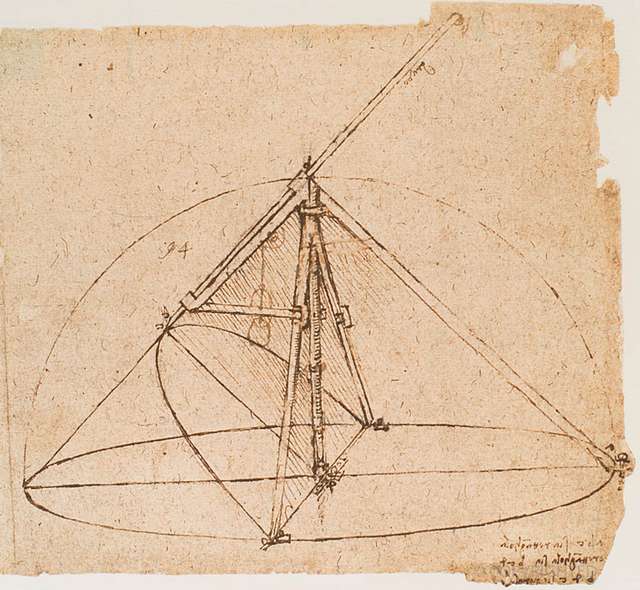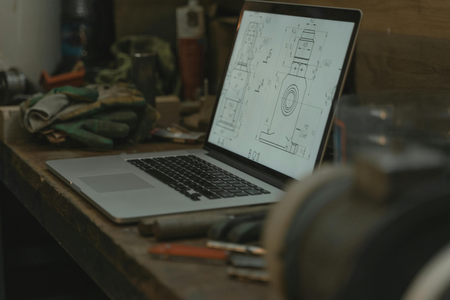A historical journey through the development of technical drawing – from hand-drawn masterpieces to digital precision
Introduction
Technical drawing has been the backbone of engineering, architecture, and design for centuries. I have always been passionate about technical drawing because it combines precision with creativity, and I believe hand-drawn sketches add a unique, personal touch that digital tools sometimes miss. On this blog, I aim to share that passion and highlight the value of traditional techniques alongside modern technology. Technical drawing has been the backbone of engineering, architecture, and design for centuries. From the earliest sketches of ancient inventors to the highly precise digital blueprints of today, it has shaped how we build, create, and innovate. In this article, we will take a journey through time, starting with Egyptians through the brilliant hand-drawn works of Leonardo da Vinci, through the structured drafting tables of the Industrial Revolution, to the digital precision offered by modern CAD systems. We will also explore why hand-drawn sketches still matter today, even with digital tools available, and how they bring a personal and creative touch to technical drawing.
Early Technical Drawings in Ancient Civilizations
From Egyptian pyramid blueprints to Roman aqueduct plans, early civilizations laid the groundwork for technical drawing. The Greeks introduced geometric precision, and the Romans refined architectural drawings, influencing design for millennia. Ancient Chinese engineers also developed detailed drawings for pagodas and mechanical inventions like the south-pointing chariot.
Notable Figures in Early Technical Drawing
- Imhotep (Egypt, 27th century BCE): Architect of the first pyramid, known for early use of architectural plans.
- Vitruvius (Rome, 1st century BCE): Wrote De Architectura, detailing architectural principles and technical drawing methods.
- Zhang Heng (China, 78–139 CE): Inventor and engineer, known for mechanical designs documented in technical drawings.
Tools and Techniques of Ancient Drafting
Early drafters used rudimentary tools like straight edges, compasses made of wood or bone, and charcoal or ink for sketching. Parchment and papyrus served as the first drawing surfaces.
Leonardo da Vinci and Renaissance Drawings
Leonardo da Vinci is often regarded as one of the earliest pioneers of technical drawing, with notable works such as his aerial screw (a precursor to the helicopter) and mechanical knight, which exemplify his innovative approach and technical skill. His detailed sketches of machines, engineering concepts, and anatomical studies showcased an unparalleled level of precision and creativity. Da Vinci’s work laid the foundation for technical illustrations by emphasizing accurate proportions, fine details, and functional clarity. His approach combined artistic skill with scientific inquiry, making him not just an artist, but also an engineer ahead of his time. Some of his most notable technical drawings include sketches of flying machines, hydraulic systems, and mechanical devices, influencing future generations of engineers and architects.

The Industrial Revolution: Standardization and Technical Drafting
The Industrial Revolution marked a significant shift in technical drawing. As industries grew, the need for standardized designs became crucial. Engineers and draftsmen began using precise tools like rulers, compasses, and protractors to create accurate blueprints. This era saw the introduction of standardized drawing conventions, symbols, and dimensioning techniques, which ensured that designs could be universally understood and replicated.
Key Figures in Standardization
Innovations in Drafting Tools
- Thomas Telford (1757–1834): Introduced standardized engineering practices in civil engineering.
- Joseph Whitworth (1803–1887): Developed standardized screw threads and precision measurement systems.
- William Farish (1759–1837): Introduced isometric projection to technical drawing.
The invention of mechanical pencils, precision compasses, and drafting tables allowed for greater accuracy. The cyanotype process introduced blueprint copies, revolutionizing design communication. Technical societies like the American Society of Mechanical Engineers (ASME) and International Organization for Standardization (ISO) played crucial roles in formalizing technical drawing standards.
In the 20th century, drafting tables became the centerpiece of design studios. Equipped with adjustable surfaces, T-squares, set squares, and specialized templates, these tables allowed draftsmen to produce detailed and scalable technical drawings. Manual drafting techniques were essential in fields like architecture, mechanical engineering, and electronics, laying the groundwork for complex projects before digital tools were available.
The Digital Revolution: CAD Systems Take Over
The late 20th century introduced Computer-Aided Design (CAD) systems, revolutionizing technical drawing. Programs like AutoCAD allowed designers to create, edit, and store drawings digitally. CAD systems offered unprecedented precision, faster revisions, and easier sharing of designs, making them indispensable in modern engineering, architecture, and manufacturing. However, CAD also comes with challenges such as a steep learning curve, high software costs, and the need for continuous training to keep up with new features. Programs like Sketchpad, AutoCAD, and CATIA replaced manual drafting, enhancing precision and efficiency. CAD revolutionized industries from automotive design to aerospace engineering. Complex 3D models and simulations reduced errors and accelerated production
3D Modeling and Simulation (1990s–2010s)
3D parametric modeling, FEA simulations, and real-time rendering tools allowed engineers to visualize and test designs before manufacturing. Programs like SolidWorks and Autodesk Revit became industry standards.

Case Studies in 3D Design
Notable projects like the Boeing 777, designed entirely in CAD, demonstrated the potential of digital drafting. The construction of landmarks like the Burj Khalifa used advanced CAD tools for structural integrity and design.
The Future of Technical Drawing
The future of technical drawing lies in a blend of tradition and innovation. Technologies like Virtual Reality (VR) and Augmented Reality (AR) are set to enhance digital design, offering immersive ways to visualize and manipulate 3D models.Future Trends

AI-driven optimization, real-time collaboration in VR, and holographic modeling are on the horizon, promising even more efficient design processes.
However, the fundamental skills of hand-drawing remain valuable, especially in early design stages and educational settings.
Hand-Drawn vs. CAD
While CAD offers efficiency and accuracy, hand-drawn technical sketches remain relevant. Hand drawing fosters creativity, improves spatial understanding, and serves as a quick and intuitive way to communicate ideas. Many designers still begin projects with hand sketches before transitioning to digital formats, valuing the tactile connection and flexibility that manual drawing provides.
Conclusion
From the brilliant hand of Leonardo da Vinci to the precision of CAD software, technical drawing has evolved tremendously. As technology advances, the core principles of technical drawing endure. On this blog, we will continue to explore hand-drawn technical sketches, providing tutorials, tips, and insights into this timeless art form. Tools change, but the craftsman remains. Whether with a quill or a digital pen, true mastery lies in the understanding, not the medium.
Join me as we embrace the art of hand-drawn technical drawings in the digital age, preserving the craftsmanship and creativity that started it all.
I encourage you to start your own journey with technical drawing, whether by hand or digitally. Follow my blog for upcoming hand-drawn tutorials, tips on tools, and step-by-step guides to help you improve your technical drawing skills.
Did you know ?
Leonardo wrote from right to left
Most of Leonardo da Vinci’s notes were written in mirror writing – right to left, like you’d read them in a mirror. And yep, that’s totally real.
Why did he do it? Nobody knows for sure.
Some say he wanted to keep his ideas secret.
Others think it’s because he was left-handed and writing this way helped him avoid smudging the ink.But one thing’s clear – his technical sketches didn’t need translation.
Drawing was his true language. And it still speaks.
Related Articles
- The Benefits of Handwriting and Drawing: How Manual Techniques Boost Brain Function
- Introduction to Technical Lettering – A Beginner’s Guide